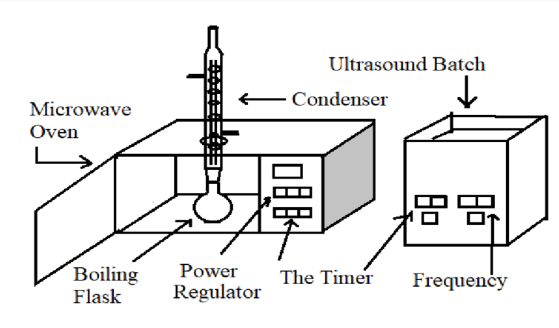(2do) Ultrasonication and Microwave Assisted Extraction of Bioactive Compounds
AIChE Annual Meeting
2022
2022 Annual Meeting
Meet the Candidates Poster Sessions
Meet the Faculty and Post-Doc Candidates Poster Session
Sunday, November 13, 2022 - 1:00pm to 3:00pm
Food waste is a notable problem for the environment, economy and food security. Fruit wastes are one of the main resources of different bioactive components. The peels, pomace, and seed fractions of fruit waste come out as a favorable feedstock for recovery of bioactive compounds, namely phenolics, pectin, lipids, dietary fibers, etc. High consumption of diet/food rich in these bioactive compounds with antioxidant activity, including vitamins, phytochemicals, and mainly phenolic compounds such as flavonoids and carotenoids, has a favorable impact on human health. Consumption of these could also diminish the risk of certain diseases, such as cancer, heart disease, stroke, Alzheimer’s, diabetes, cataracts, and age-related functional decadence. For extraction of bioactive compounds, natural and bio-based solvents (e.g. water, ethanol, ethyl acetate, ethyl lactate, limonene) and natural deep eutectic solvents (NADES) have been explored. Owing to their biodegradability and biocompatibility, NADES may be a potential green alternative to harmful conventional counterparts (i.e. organic solvents). Natural solvents rupture the internal cells of fruit waste material with minor amounts and are fast as compared to the other organic solvents. In our study, we propose to use a different combination and ratio of chemical components to extract the various bioactive components. NADES based on malic acid, urea, and fructose as hydrogen bond donors (HBD) and choline chloride as a hydrogen bond acceptor (HBA) is proposed to be employed. Conventional extraction methods (simple extraction, SE) generally result in less bioactive component extraction yields and have low selectivity. Non-conventional extraction techniques could be formulated to cope with the demerits of these standard extraction methods. Ultrasound-assisted extraction (UAE) is a valuable extraction technology that is more efficient than traditional extraction methods (Chemat et al., 2017). Shorter time, easy operation, frugal solvent requirement, lower temperature, better energy savings, and higher yield are among the benefits claimed for UAE. Microwave-assisted extraction (MAE) has a number of advantages, such as shorter extraction time, need for lesser solvent, higher extraction rate, and lower cost, over the traditional method of extraction of compounds from various fruit wastes material. Also, it is possible to use combinations of microwave and ultrasound for obtaining the maximum extraction yield of targeted bioactive compounds. To separate the solvent from the mixture, a rotary evaporator (which reduces the boiling point and condenses it in a shorter time) is used in this study. Experiments are performed at the temperature between 40 and 80°C, extraction time between 2 and 30 min, and the ratio of solvent to solid between 30 and 60 ml/g using several desired solvents. Fig.1 presents the microwave-Ultrasonic Synthesis/Extraction/Reactor System
Fig.1- Microwave-Ultrasonic Synthesis/Extraction/Reactor System
Central composite design (CCD) is used for the optimization of extraction parameters. Thermodynamics and Kinetics for the extraction process are determined to understand the process which is necessary for scale-up analysis. In the extraction of solid compounds using liquid solvent, diffusion of solute molecules into the solvent is the crucial phase of the extraction process and the extent of diffusion determines the extraction efficiency. Also, the thermodynamics and kinetics parameters indicate that MAE and UAE processes for the recovery of bioactive compounds from various fruit wastes using different types of solvent are endothermic, irreversible, and spontaneous. Such findings were reported in the literature (Tabaraki et al., 2012, Akbari et al., 2019, Wei et al., 2020). In addition to the application of microwave and ultrasound, a better combination of green solvents (like NADES) with other organic solvents may lead to more satisfactory results.
References
Akbari, S., Abdurahman, N.H. and Yunus, R.M. (2019). Optimization of saponins, phenolics, and antioxidants extracted from fenugreek seeds using microwave-assisted extraction and response surface methodology as an optimizing tool. Comptes Rendus Chimie, 22(11-12), pp.714-727.
Tabaraki, R., Heidarizadi, E., & Benvidi, A. (2012). Optimization of ultrasonic-assisted extraction of pomegranate (Punica granatum L.) peel antioxidants by response surface methodology. Separation and Purification Technology, 98, 16–23.
Wei, M., Zhao, R., Peng, X., Feng, C., Gu, H., & Yang, L. (2020). Ultrasound-assisted extraction of Taxifolin, Diosmin, and Quercetin from Abies nephrolepis (Trautv.) maxim: Kinetic and thermodynamic characteristics. Molecules Article, 25(6), 1401.

